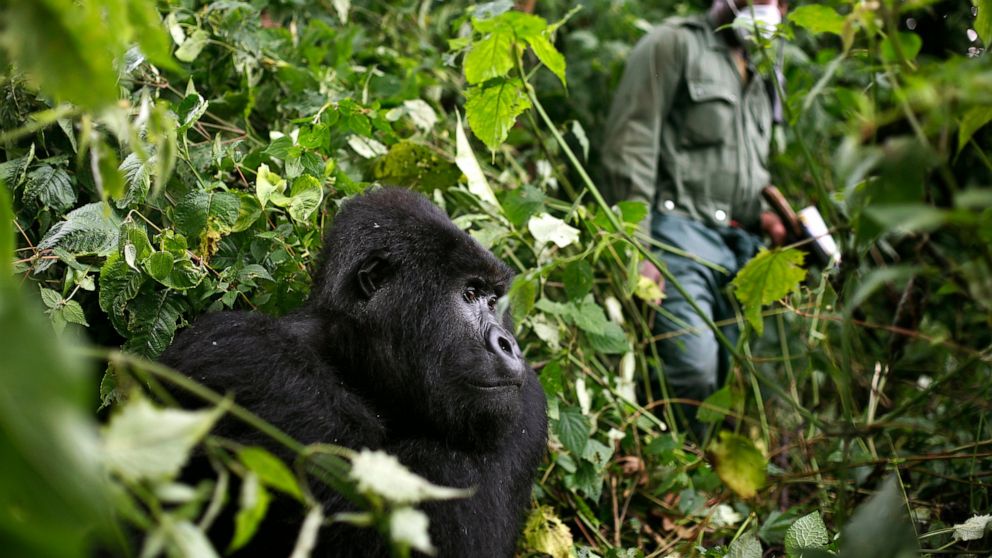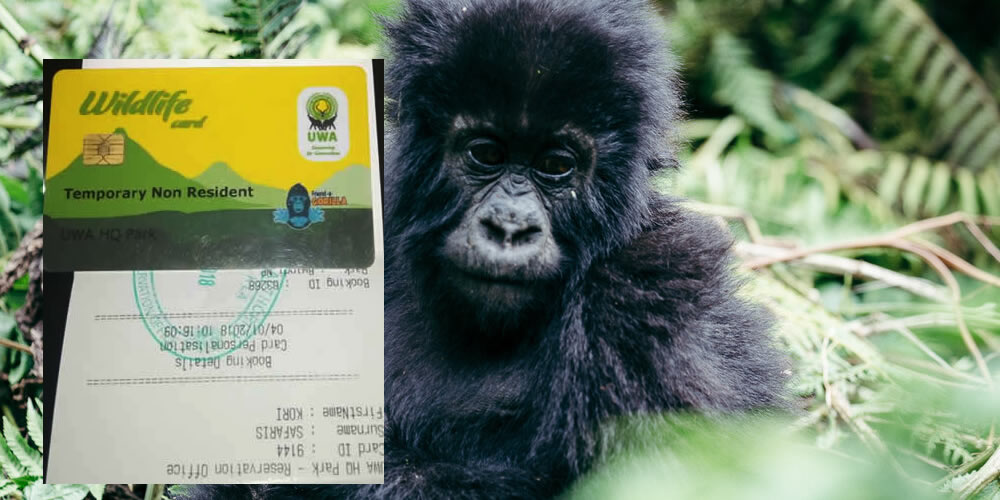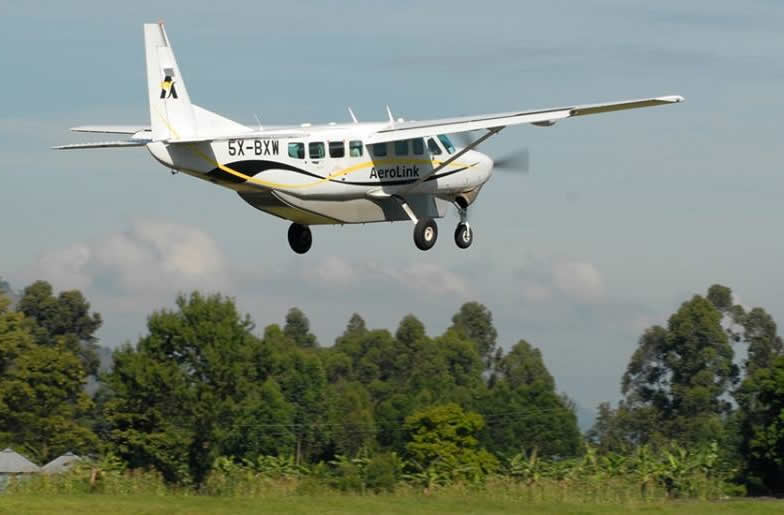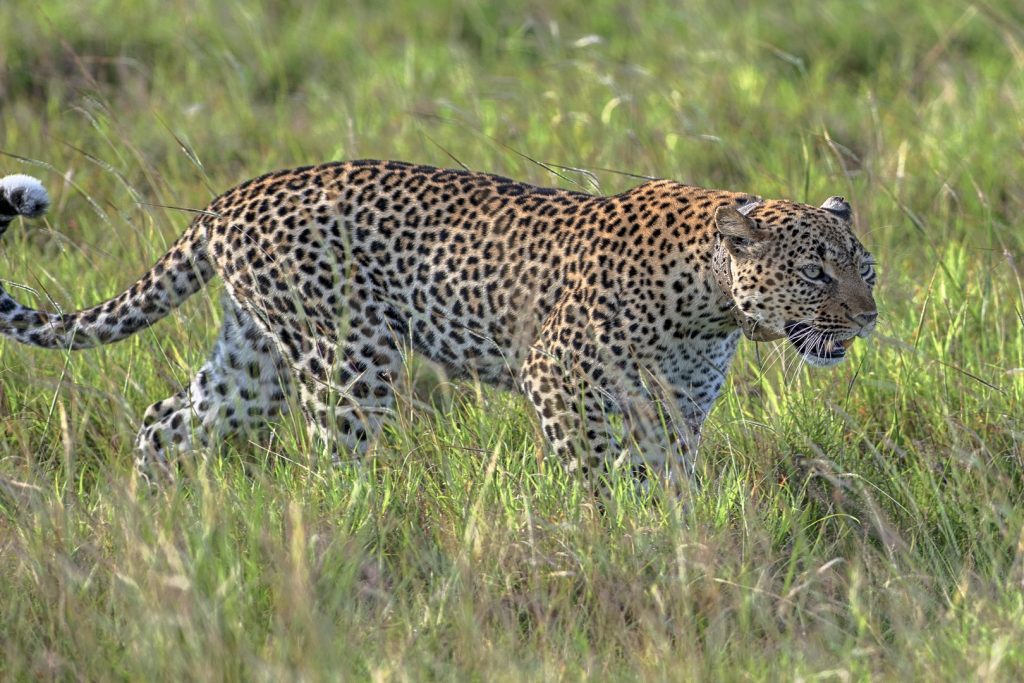
Difference between gorilla trekking and gorilla habituation experience.
Difference between gorilla trekking and gorilla habituation experience.
Difference between gorilla trekking and gorilla habituation experience : When you travel to Uganda on a safari, you will learn about the thrilling activities of gorilla trekking and gorilla habituation. There is no difference in the procedures of these two activities, but instead on the number of people who can be booked for the activity, time spent in the presence of the mountain gorillas and price variations.
Mountain gorilla groups must first go through some type of training to make them adapted (used to or less scared to human presence), and this procedure is known as “habituation” before they are opened to visitors (for trekking). This is done to make them free and at simplicity with humans and normally lasts from two to three years, and is fundamental for the on-going research, protection and safeguarding of the Giant Apes in their natural environments. Gorilla Trekking safaris are offered in all the four safari destinations that is Mgahinga Gorilla and Bwindi Impenetrable National Parks of Uganda, Volcanoes National Park of astounding Rwanda and renowned Virunga National Park of Democratic Republic of Congo. Bwindi Impenetrable Forest in Uganda is the only safari destination where the gorilla habituation safari experience is provided. Having got a glimpse of these two activities, here are the differences between Gorilla Trekking and Gorilla Habituation;
First, fully habituated gorilla groups (ones that are fully trained) are visited during standard gorilla treks while only semi-habituated gorilla groups (or the ones still undergoing training) are visited during Gorilla Habituation safari Experience. They are therefore less accustomed to humans than fully habituated gorillas, making them wilder, more fearful, and more hesitant.
Price.
The prices of these two activities differ significantly with gorilla trekking costing a gorilla permit at $700 for foreign non-residents, $600 for foreign residents and UGX 250,000 for East African citizens while permits for gorilla habituation are at $1,500 for foreign non-residents, $1000 for foreign residents and UGX 750,000 for East African citizens. These permits can be obtained via a reputable tour operator or at the headquarters of the Uganda Wildlife Authority. Both activities must be reserved in advance because they sell out quickly.
Number of persons for each activity.
Gorilla habituation only permits 4 visitors per gorilla family, but gorilla trekking safari in Bwindi enables 8 people to trek a single gorilla family every day. This is done to lessen virus transmission and gorilla stress.
Length/period of the activities.
Gorilla trekking safari activity restricts travelers after encountering the gorillas to spend only one hour in the presence of the habituated family, while gorilla habituation allows travelers to spend four full hours in the presence of these wild gorillas undergoing the habituation process. The time spent on the treks to and from the location of the specific gorilla family varies based on where they are slept and can take any time between 30 minutes and 5 hours or more.

Persons that escort the tourist while on these activities.
Tourists on a gorilla trekking safari activity only need a guide and ranger to escort them on the adventure whereas tourists on a gorilla habituation activity are required to move with rangers, researchers and habituation experts and doctors. This is because tourists require these people who are more experienced in handling them to be with them during the gorilla habituation experience because the gorillas doing the exercise are still wild and undergoing a series of learning procedures.
Number of gorilla families available.
While on a gorilla trekking safari in Uganda, visitors can track 23 fully habituated gorilla families in the park’s four sectors, but only eight gorilla families are currently being habituated, and as a result, the only gorillas with which visitors can participate in a gorilla habituation experience are located in the park’s southern sector.
Appropriate age.
The right and suggested age for both activities is 15 years. Persons below the age of 15 cannot go gorilla trekking or gorilla habituation for fear of their reaction to what they’ll see as they can shout or be really nervous and also fail to make through the trek. The gorillas are at risk from the paediatric illnesses they also carry because they are very contagious and lethal to gorillas.
All year long, visitors to Bwindi Impenetrable National Park can engage in gorilla trekking, gorilla habituation, or even both. The best times to visit the park are during the dry season, which lasts from mid-June to mid-September and mid-December to mid-February. This is because the park is easily accessible and the vegetation is not as overgrown hence making it very easy to spot the gorillas.
The rules and regulations for gorilla trekking and gorilla habituation are identical and travelers are advised to follow them at all times for their own safety and ecological preservation of the mountain gorillas. Some of them include;
Minimum age for both activities is 15 years.
Tourists should not be sick or have any infection.
A 7-meter distance should always be maintained when in the presence of the gorillas.
Do not look at the gorillas straight in the eyes.
Stay calm when a gorilla charges at you. Follow all the instructions that your ranger or guide will be sharing at that moment.
Do not use flash photography.
Do not litter the park.
Do not eat, drink or smoke near the gorillas.
Tourists are urged to take the suggested essential gear for successful gorilla trekking and gorilla habituation experiences, including sturdy hiking boots, long-sleeved shirts, long pants, hand gloves, waterproof hats, coats, and energy giving foods, among many more.
It is highly recommended to engage in gorilla habituation or gorilla trekking while visiting Bwindi Impenetrable National Park. If not both, the contrast between gorilla trekking and gorilla habituation should provide you some guidance. Use a reputable tour operator to help you plan anything you decide to do on a Uganda safari to make you get unforgettable safari memories.






